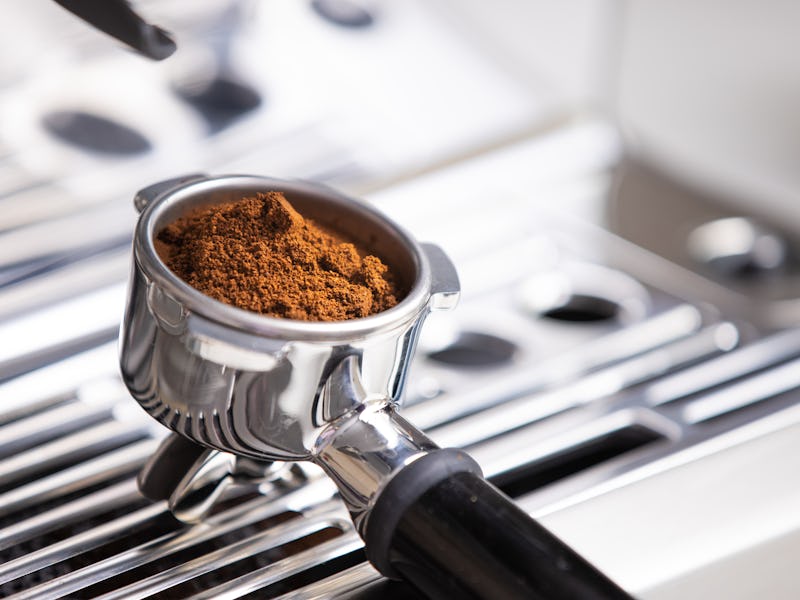This Science-Backed Secret Ingredient Will Create A Better Espresso Shot
Your espresso’s jolt is more than caffeine.

An extra step in your espresso-pulling practice could brew a richer, more efficient shot, a new study shows.
Published today in the journal Matter, the research examines how static electricity meddles with grinding espresso beans, as well as how moisture thwarts its wasteful effects. The work, done by researchers in Oregon and Korea, demonstrates how to harness material science when making your favorite beverage.
Static electricity is an imbalance of positive and negative charges between objects. It comes from triboelectrification, a process that causes static charge to accumulate on surfaces. As whole espresso beans grind, they exchange electrons at a rapid pace — what’s known as tribocharging. This forces bean particles to gather together in clumps. The resulting static charge could make ground beans stick to the grinder.
The trick is to mist the whole beans with water before grinding, which significantly cuts tribocharging. Senior author Christopher Hendon, a computational materials chemist at the University of Oregon, writes to Inverse that the water serves many potential roles in neutralizing these charged particles, from its cooling properties to the way it alters the coffee’s and grinder’s surface chemistry. “What we are most sure of is its impact,” he writes, “coffee ground in the presence of water results in de-aggregation of clumps.”
Grinding coffee beans without a spritz of water beforehand creates static electricity, resulting in less efficient use.
First author Joshua Méndez Harper, an electrical and computer engineering professor at Portland State University, also writes to Inverse that without water, any electrical charge gained during grinding “sticks” to particle surfaces. But, even small amounts of water let charges recombine and rebalance. Hendon recommends just 3 to 5 drops or about 4 squirts from a misting bottle.
The researchers found that static electricity changes depending on the bean. Hendon writes that light roasts “generally contain more water than dark roasts,” but are also less oxidized because they’re not cooked as long, making them more amenable to electron loss, which can result in positive charge formation.
It's important to note that this water trick works for baristas and people who grind their own beans at home. But Hendon notes that for those who do use the water method, there is an economic incentive as it increases espresso concentration by about 15 percent. However, on an annual scale in a coffee-loving continent like Europe, he estimates this method could save as much as €250,000,000 — and give you better coffee.